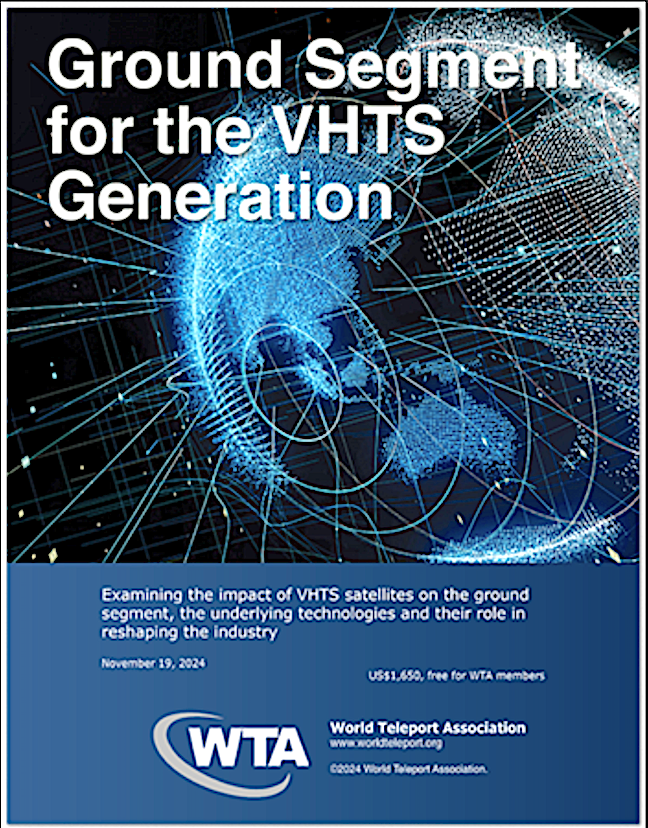
WTA has released its newest research report, Ground Segment for the VHTS Generation. The report is free for WTA Members and available for purchase by others.
About…
While all eyes may be on low Earth orbit, the real story is about high-throughput satellites (HTS) and VHTS flying in GEO, MEO and LEO. Since the first HTS satellite, IPSTAR, was launched in 2005, the frequency-sharing, multi-beam architecture it pioneered has become standard in LEO and MEO satcom. Intelsat’s decision to launch its EPIC Ku-band HTS satellites made clear that it would become common in GEO as well. Then came the very high-throughput birds Jupiter 3 with its 500 Gbps and ViaSat 3 with its Terabit of capacity (sharply degraded on the first satellite by an antenna problem). All of this has stacked up challenges for the ground segment. Hub infrastructure must scale to support hundreds of beams, support dynamic allocation of return channels and waveform optimization, handle higher symbol rates and greater throughput. Advanced network management will be needed to handle multi-orbit, multi-beam, multi-satellite handovers.
In this report, teleport and technology executives report on the technical, operational and business challenges they face and the paths they are navigating to achieve profitable growth while meeting new needs. The report is sponsored by Kratos.
Quotes from the Report:
A technology expert noted, “A multi-orbit ground infrastructure needs to be global and integrated with the satellites’ traffic orchestration. Real-time traffic orchestration becomes the must-have feature because we will not be able to assign static pools of bandwidth on a certain satellite or group of satellites.”
An expert with a technology provider summed it up, “To support higher data rates, we are now moving into higher frequencies, and we are seeing Ka-band multi-beam antennas for user links and Q/V-band antennas for feeder links, which are crucial components to cope with VHTS mission requirements.”
